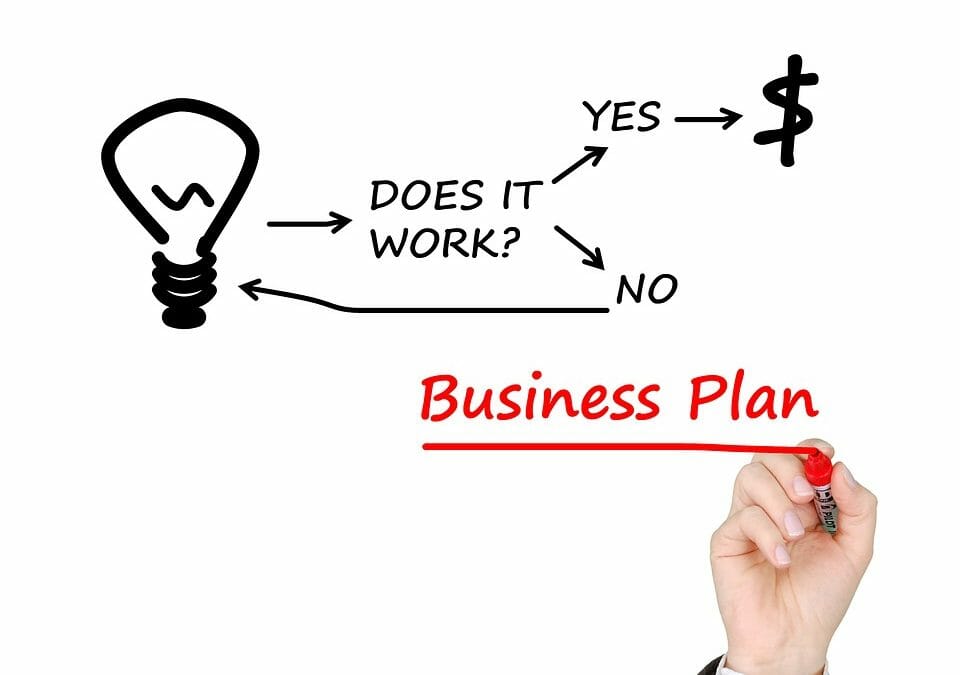Writing your business plan
Writing your business plan is a smart way to map out your future business story. Loads of businesses don’t bother writing one, and then again loads of businesses don’t survive and thrive.
A good business plan focuses the mind, brings clarity and helps your business make money. It’s useful if you are wanting help to secure finance and support, but useful if you are the only one it’s written for.
The business plan will clarify your business idea and define your long-term objectives. It provides a blueprint for running the business and a series of benchmarks to check your progress against.
It is also vital for convincing funders – and possibly key customers and suppliers – to support you.
Executive summary
The executive summary outlines the important stuff in your business. It goes on the first page of the business plan and I recommend you write and draft this section first. Most people make this the last section to be written.
The executive summary is It will be read by people unfamiliar with your business, so avoid jargon.
The executive summary highlights the most important points and should sum up the following key areas.
- Your product or service and its advantages.
- The opportunity in the market.
- Who are your management team.
- Outline your track record to date.
- Financial projections.
- Funding requirements and expected returns.
When deciding whether to back a start-up, bank managers and investors often make provisional judgements based on the executive summary.
- The main body of the business plan is then read to confirm the initial decision. The appendices at the back of the plan carry detailed information to support the main text.
The business
Explain the background to your business idea, including:
- The length of time you have been developing the business idea in its present form.
- Work carried out to date.
- Any related experience you have.
- The proposed ownership structure of the business.
Explain, in plain English, what your product or service is. Make it clear how:
- it will stand out as different from other products or services
- your customers will gain through buying your product or service
- the business can be developed to meet customers’ changing needs in the future
It is important to cover any disadvantages or weak points you feel the business may have.
Explain any key features of the industry (e.g. special regulations, effective cartels or major changes in technology).
Markets and competitors
Focus on the segments of the market you plan to target – for example, local customers or a particular age group.
- Indicate how large each market segment is and whether it is growing or declining.
- Illustrate the important trends – and the reasons behind them.
- Outline the key characteristics of buyers in each segment (eg age, sex or income).
- Mention customers you have already lined up and any sales you have already achieved.
Identify any competing products or services and who supplies them?
- List the advantages and disadvantages of all your competitors and their products.
- Explain why people will desert established competitors and buy from you instead.
- Show you understand your competitors’ reaction to losing business and demonstrate how you will respond to it.
In order to build a sustainable business the market has to be viable, and you need to have a clear idea as to how you are going to be competitive.
You must show you have done the market research needed to justify what you say in the plan.
Sales and marketing
This is an important section and helps indicate the likelihood of business success.
Areas to address
How your product or service meets your customers’ specific needs
How you will position your product or service
- This is where you show how your price, quality, response time and after-sales service will compare with competitors.
- Quote minimum order figures, if appropriate.
How you will sell to your target customers
For example, by phone, on-line, face-to-face, sales agents etc.
- A significant amount of time and resources will be spent making contacts, developing networks and selling.
- Will you be able to make repeat sales? If not, it will be hard to build up volume. Who are likely to be your first customers?
- Show which customers have expressed an interest or promised to buy from you and the sales they represent.
- How will you identify potential customers?
Unless you can demonstrate that you have a clearly defined pool of potential customers, starting your business is likely to be a struggle.
How will you promote your product? For example, using advertising, PR, direct mail or via email and a website.
What contribution to profit will each part of your business make?
- Most businesses need more than one product, more than one type of customer and more than one distribution channel.
- Look at each in turn. Examine your likely sales, gross profit margins and costs.
- Identify where you expect to make your profits and where there may be scope to increase either margins or sales.
Services and intangible products (e.g. computer software) are more difficult to market. Special attention must be made to marketing in your business plans.
In our next blog we look at the Business Plan Numbers, and Presentation.
Get in touch to see where we can help you write your Business plan and more !
